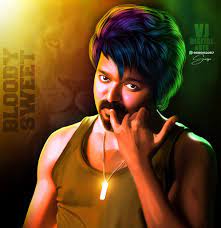Maha Navami 2023: Date, history, puja timings, significance, celebration and all you need to know

The ninth day of Shardiya Navratri, known as Maha Navami, is a significant Hindu celebration that commemorates Goddess Durga’s triumph over evil. This special day, falling on the ninth day of Ashwin’s Shukla paksha, marks the conclusion of the nine-day fasting period of Navratri. Maha Navami is dedicated to the worship of Maa Siddhidatri, as it is believed that Durga Maa launched her decisive attack on the demon Mahishaura on this day, ultimately defeating him the following morning on Vijayadashmi. To get a comprehensive understanding of this auspicious occasion, including its date, historical context, and significance, read on.
When is Maha Navami 2023?
In the Indian month of Ashwina, Maha Navami is celebrated on the Navam i.e. the 9th day of Shukla paksha. This year, Shardiya Navratri is celebrated from October 15 to October 24 and the last day of Sharad Navratri is revered as Maha Navami of Durga Navami. Therefore, the Navami will be celebrated on Monday, October 23. According to Drik Pachang, the Navami tithi will begin at 7:58 pm on October 22 while it will end at 5:44 pm on October 23, 2023.
Maha Navami history
Maha Navami, observed on the ninth day of Sharad Navratri, holds great historical and mythological importance, as it marks the penultimate stage of Goddess Durga’s battle against the buffalo demon Mahishasura. This day is believed to signify the moment when the Goddess, in her fierce form, vanquished the demon, symbolizing the ultimate victory of good over evil. During Maha Navami celebrations, Goddess Durga is venerated as Mahishasuramardhini, which translates to ‘She Who Killed Mahishasura.’
Significance of Maha Navami
The significance of Maha Navami lies in its observance as the ninth day of the Sharad Navratri festival, marking the culmination of the nine-day worship of Goddess Durga. This day holds several key aspects of importance:
- Victory of Good over Evil: Maha Navami symbolizes the victory of good over evil, as it is believed to be the day when Goddess Durga defeated the buffalo demon Mahishasura, signifying the triumph of righteousness and the vanquishing of malevolence.
- Final Battle: According to Hindu mythology, Maha Navami represents the climax of the battle between the Goddess and Mahishasura, underscoring the ultimate power and strength of the divine feminine.
- Worship of Goddess Durga: Devotees offer special prayers and rituals to honor Goddess Durga, especially in her form as Mahishasuramardhini, the one who slayed Mahishasura. This worship seeks blessings, protection, and empowerment from the Goddess.
- The Conclusion of Navratri: Maha Navami also signifies the conclusion of the nine-day Navratri festival, where devotees fast, pray, and engage in spiritual activities to purify their minds and bodies.
- Auspicious Beginnings: In some regions, Maha Navami is considered an auspicious day for commencing new ventures, starting educational activities, or initiating other significant life events.
In summary, Maha Navami holds great significance in Hindu culture, emphasizing the victory of good over evil, the divine power of Goddess Durga, and the conclusion of the Navratri festival, making it a spiritually and culturally significant day for millions of devotees.
Maha Navami celebrations
Maha Navami celebrations are marked by various rituals, customs, and festivities dedicated to Goddess Durga. These celebrations are a vibrant and joyous part of Sharad Navratri and typically include the following activities:
- Worship of Goddess Durga: Devotees perform elaborate pujas and offer prayers to Goddess Durga, particularly in her form as Mahishasuramardhini. They decorate her idol or image with flowers, vermillion, and other offerings.
- Special Bhog (Offerings): Devotees prepare special meals and sweets as offerings to the Goddess. These offerings, known as “bhog,” are considered sacred, and after being offered to the deity, they are distributed among the devotees as prasad.
- Fasting: Many people observe a day-long fast on Maha Navami as a mark of devotion. They abstain from consuming grains, and some even refrain from consuming food and water until the evening puja.
- Kanya Puja: In some regions, young girls are invited to represent the Goddess and are offered a special meal and gifts as a part of the Kanya Puja, which signifies the divine feminine energy.
- Cultural Programs: In many communities, cultural events such as dance performances, music, and drama take place as part of the celebrations. These performances often revolve around stories related to Goddess Durga and depict her valor.
- Processions: Processions with idols or images of Goddess Durga are common, especially in areas where Navratri is celebrated with great fervor. These processions are accompanied by music, dance, and enthusiastic devotees.
- Auspicious Beginnings: Some people use this day to initiate new ventures, start educational activities, or undertake significant tasks, believing that doing so on Maha Navami brings good luck and blessings from the Goddess.
- Community Gatherings: Families and communities come together to celebrate Maha Navami, sharing meals and enjoying each other’s company. It is a time for social bonding and reinforcing cultural and religious values.
- Donations and Charity: Many individuals and organizations engage in acts of charity and donate to the less fortunate on Maha Navami as a way of seeking blessings and spreading goodwill.
Overall, Maha Navami celebrations are a beautiful blend of religious observance, cultural festivities, and acts of compassion. These celebrations vary in intensity and style across different regions and communities but are unified in their devotion to Goddess Durga and the celebration of her divine power.






